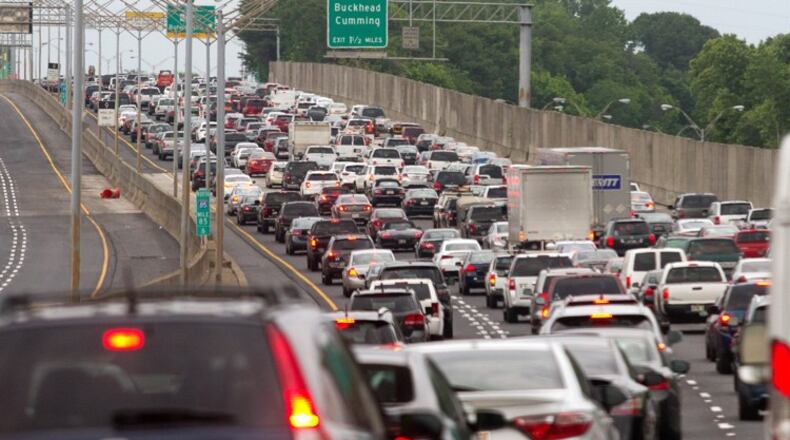Thanks to the near-miracle of quick-setting concrete, as well as Herculean, around-the-clock effort by a highway contractor and GDOT, the I-85 collapse-as-crisis is now behind us.
The human tendency will be to let the Great Highway Fire of 2016 recede quickly in memory until it’s nothing more than just another small bump felt in zipping down I-85 as autos pass over the hurriedly rebuilt stretch of roadway.
For sure, Georgians will talk for a good while yet about the collapse-driven traffic snarls, the detours through unfamiliar neighborhoods, the adventures of riding transit – in many cases for the first time – as well as our missed appointments, rearranged work schedules and the like.
We’d be remiss in not offering thanks to GDOT and highway builder C.W. Matthews Co. for their rapid, relentless effort in reconnecting I-85. We join Georgians in praising their work.
With the removal of the construction barriers on this great thoroughfare, life as we know it began a rapid drive back to what passes for normal.
There's risk in that, we believe. The I-85 collapse offers solid lessons that metro Atlanta, and Georgia, should heed.
The most-glaring insight is that redundancy is not a bad thing when it comes to transportation infrastructure. Indeed, it is invaluable and vital – especially in a metro where so many places lack adequate alternate routes between any points A and B.
Greater Atlanta made it through the collapse because we made the best of the limited options we had in place. The region’s transit agencies scrambled to quickly collaborate and coordinate their services. That gave Atlantans options. The improved efficiency that resulted from working more closely together should not be forgotten. It shows what we can do toward advancing a common good.
The I-85 crisis, perhaps most importantly, shows clearly how far we have to go in addressing our remaining infrastructure gaps. We certainly need the improved roads and toll lanes that GDOT has in the works.
Metro Atlanta and the state also need to find the will to make the next great leap on transit improvements. The city of Atlanta’s new T-SPLOST is a solid part of that, but the rest of the region needs to get on board, too, in our view.
With the Atlanta region adding new residents at a rapid pace, we have no other real option if we want to sustain our growth and prosperity.
About the Author




